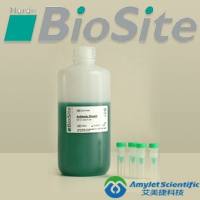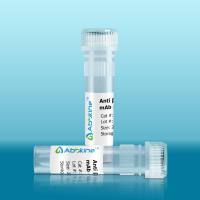Using Biacore to Measure the Binding Kinetics of an Antibody‐Antigen Interaction
互联网
- Abstract
- Table of Contents
- Materials
- Figures
- Literature Cited
Abstract
The optical phenomenon of surface plasmon resonance (SPR) used by Biacore systems enables the detection and measurement of protein?protein interactions in real time, without the use of labels. In this unit, the application of Biacore technology to measure a protein?protein interaction is described using an antibody and its antigen as an example. The affinity of the antibody for its antigen is determined by measuring the binding kinetics of the interaction. The protocols are divided into three major steps that are required for measuring binding kinetics using Biacore: (1) surface preparation, (2) assay development, and (3) kinetic analysis.
Keywords: Biacore; surface plasmon resonance (SPR); biosensor; label?free; protein interaction analysis; kinetics; antibody
Table of Contents
- Basic Protocol 1: Identification of Optimal Immobilization pH (pH Scouting)
- Basic Protocol 2: Immobilization of Ligand to Sensor Chip Using Amine Coupling
- Basic Protocol 3: Regeneration Scouting: Identifying a Suitable Buffer for Surface Regeneration
- Basic Protocol 4: Surface Performance Test to Assess Ligand Stability Under Regeneration Conditions
- Basic Protocol 5: Kinetic Analysis for Ligand Immobilized Directly to Surface
- Alternate Protocol 1: Immobilization of Ligand to Sensor Chip Using Ligand Capture Method
- Alternate Protocol 2: Kinetic Analysis for Ligand Capture Method of Binding Ligand to Surface
- Reagents and Solutions
- Commentary
- Literature Cited
- Figures
Materials
Basic Protocol 1: Identification of Optimal Immobilization pH (pH Scouting)
Materials
Basic Protocol 2: Immobilization of Ligand to Sensor Chip Using Amine Coupling
Materials
Basic Protocol 3: Regeneration Scouting: Identifying a Suitable Buffer for Surface Regeneration
Materials
Basic Protocol 4: Surface Performance Test to Assess Ligand Stability Under Regeneration Conditions
Materials
Basic Protocol 5: Kinetic Analysis for Ligand Immobilized Directly to Surface
Materials
Alternate Protocol 1: Immobilization of Ligand to Sensor Chip Using Ligand Capture Method
Materials
Alternate Protocol 2: Kinetic Analysis for Ligand Capture Method of Binding Ligand to Surface
Materials
|
Figures
-
Figure 19.14.1 The sensorgram is a plot of response in resonance units (RU) versus time in seconds, which is presented continuously in real time. Upon injection of an analyte, if a binding interaction occurs, then an increase in mass occurs on the sensor chip surface and association is measured. At the end of the analyte injection, as the complex decays, a decrease in mass occurs and dissociation is measured. Association and dissociation are measured as changes in response. View Image -
Figure 19.14.2 The effect of pH on preconcentration of anti‐β2µ‐globulin antibody onto the surface of Sensor Chip CM5. Electrostatic attraction of anti‐β2µ‐globulin antibody to the chip surface occurs for each pH tested, therefore, any pH solution that was tested can be used. The pH 5.5 sodium acetate solution was chosen because amine coupling occurs more efficiently at a higher pH. View Image -
Figure 19.14.3 Immobilization of anti‐β2µ‐globulin antibody to the chip surface. Each step and corresponding response is labeled at the top of the sensorgram. Each X on the response represents a report point, which provides a value of the response (averaged over a 5‐sec window) at a given point. Report point values are assigned a name (such as baseline or binding level) and are recorded in a table. During the preconcentration test, the ligand is injected over the unmodified sensor chip surface to determine if the desired immobilization level can be achieved. During the activation step, the carboxymethyl groups on the dextran are converted into reactive esters, and then the ligand is injected in short pulses until the desired immobilization level is achieved. During the blocking step, uncrosslinked reactive esters are blocked with ethanolamine. The immobilization level or ligand density is the final response difference from baseline, denoted by R L . View Image -
Figure 19.14.4 Results of the surface performance tests of four regeneration solutions. The responses for the baseline (solid diamonds) and for the binding response (open triangles) are plotted for each cycle. Cycle 2 corresponds to the initial baseline and binding response. The baseline and binding responses using glycine pH 3.0 (cycles 3 to 7), glycine pH 2.5 (cycles 8 to 12), glycine pH 2.0 (cycles 13 to 17), and glycine pH 1.5 (cycles 18 to 22). View Image -
Figure 19.14.5 Representative sensorgram of fitted kinetic data from the kinetic analysis of β2µ‐globulin binding to anti‐β2µ‐globulin antibody that has been directly immobilized to Sensor Chip CM5 using amine coupling as described in the text. The solid black line that is super‐imposed on the responses is the fitted curve. The analyte concentrations from the top curve are 32 nM, 16 nM, 8 nM, 4 nM, and 2 nM. The 8 nM β2µ‐globulin sample (middle curve) was run in duplicate. The values of the calculated parameters for the kinetic analysis are listed in the text. View Image
Videos
Literature Cited
| Andersson, K., Hamalainen, M., and Malmqvist, M. 1999. Identification and optimization of regeneration conditions for affinity‐based biosensor assays. A multivariate cocktail approach. Anal. Chem. 71:2475‐2481. | |
| Key References | |
| Andersson et al., 1999. See above. | |
| This report describes a systematic approach to producing regeneration solutions and identifying regeneration conditions. | |
| Karlsson, R. and Fält, A. 1997. Experimental design for kinetic analysis of protein‐protein interactions with surface plasmon resonance biosensors. J. Immunol. Methods 200:121‐133. | |
| This classic paper describes the suitability of using a dextran hydrogel on the sensor chip surface, describes the importance of using a reference, and explores the use of control experiments to gain understanding of reaction mechanisms. | |
| Myszka, D.G. 1999. Improving biosensor analysis. J. Mol. Recognit. 12:1‐6. | |
| This paper underscores the importance of careful experimental design when measuring binding kinetics with biosensors. | |
| Önell, A. and Andersson, K. 2005. Kinetic determinations of molecular interactions using Biacore: Minimum data requirements for efficient experimental design. J. Mol. Recognit. 18:307‐317. | |
| This work provides recommendations for the design of cost‐effective assays that deliver reliable kinetic measurements. | |
| Rich, R.L. and Myszka, D.G. 2005. Survey of the year 2003 commercial optical biosensor literature. J. Mol. Recognit. 18:1‐39. | |
| These literature surveys are most highly recommended as guides to careful experimental design, data analysis and presentation, and as excellent resources for outstanding biosensor publications. | |
| Rich, R.L. and Myszka, D.G. 2005. Survey of the year 2004 commercial optical biosensor literature. J. Mol. Recognit. 18:431‐478. | |
| Internet Resources | |
| http://www.biacore.com/lifesciences/products/catalog/index.html | |
| Biacore catalog. | |
| https://www.biacore.com/lifesciences/service/online_support/irdb/index.html | |
| Immobilization and regeneration database. | |
| http://www.biacore.com/lifesciences/service/training/courses/usa_canada/biacorebasics/index.html | |
| Training courses. |







